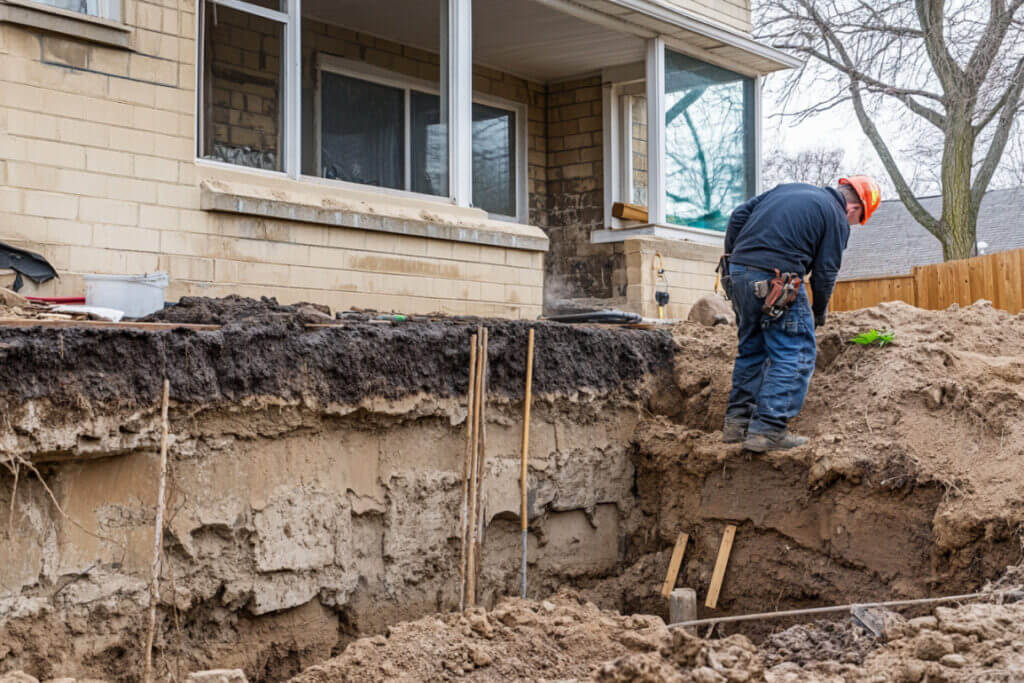
Soil heave is a significant issue that can threaten the structural integrity of homes in Gastonia, North Carolina. The phenomenon occurs when moisture levels in the soil beneath a foundation fluctuate, causing the soil to expand and contract. This continual movement can cause cracks, uneven floors, and foundation shifting, threatening home safety and comfort. Understanding the soil heave and foundation repair solutions for Gastonia homes is essential for homeowners looking to protect their properties from the damaging effects of unstable soil.
Understanding Soil Heave
Soil heave happens when moisture levels in the ground increase, typically due to rain, flooding, or improper drainage. Clay-rich soils, common in Gastonia, are particularly susceptible to this issue. When these soils absorb moisture, they expand, lifting the foundation and causing uneven surfaces in the home. However, dry soil compresses, leaving gaps that can damage structures.
While soil heave may seem like a minor inconvenience initially, over time, it can cause severe issues such as foundation cracks, misaligned windows and doors, and sagging floors. These problems can be costly to repair if not addressed early.
Moisture Management
One of the most effective ways to prevent soil heave is by managing the moisture levels around the foundation. In Gastonia, the regional climate—characterized by hot summers and wet winters—can lead to moisture fluctuations, making moisture control even more crucial. Proper moisture management techniques can help stabilize the soil under the foundation and reduce the risk of soil expansion.
A key solution to managing moisture is improving the drainage around the home. Gutter systems should be inspected regularly to ensure they are diverting rainwater away from the foundation. Water pooling near the home’s base can cause soil expansion and foundation heave if gutters are clogged or damaged. To prevent water from pooling around the home, grading should slope away from the foundation.
Installing French drains is another alternative. This technique diverts water from the foundation with a gravel-buried perforated conduit. A properly designed French drain can significantly reduce the moisture levels around the foundation, preventing heave and further damage to the structure.
Slab Re-Leveling
Once soil heave has already occurred and the foundation has shifted, slab re-leveling may be necessary to restore the structure’s integrity. Slab re-leveling is the process of lifting the foundation back to its original position and stabilizing it. This repair method is ideal for homes with concrete slab foundations, which are common in Gastonia.
The re-leveling process typically involves the use of polyurethane foam or a similar expanding material. Foam is pumped under the foundation through small slab holes. As the foam expands, it lifts the slab back into place, filling any gaps created by soil movement. Once the slab is level, the foam hardens, providing long-lasting stabilization. This technique is minimally invasive, requiring little disruption to the home and offering a quick solution to uneven floors.
In some cases, slab re-leveling may not be enough if the underlying soil continues to shift. This is why addressing moisture management before the problem worsens is so important, as the soil conditions directly impact the success of re-leveling efforts.
Pier Selection For Foundation Repair
In more severe cases of soil heave, especially when the foundation has been significantly affected, foundation repair piers may be necessary. Piers are structural supports that are installed deep into the soil, bypassing the unstable top layer and reaching solid bedrock or more stable soil layers. Once installed, these piers help stabilize the foundation by supporting its weight and preventing further shifting.
There are different types of piers that can be used in foundation repair, including helical piers, steel piers, and concrete piers. Each type has its advantages, and the choice depends on the specific conditions of the soil and the extent of the damage.
Helical piers are often the preferred option for Gastonia homes dealing with soil heave. These piers have large, screw-like blades that allow them to be driven deep into the soil without requiring large, invasive drilling. Helical piers are ideal for shifting foundations because they provide immediate stabilization and can be installed quickly, minimizing disruption to the home.
Steel piers are another option that offers excellent stability and strength. They support heavy weight and are driven deep into the earth, making them excellent for homes with foundation concerns. Steel piers are also highly durable, providing long-term support.
For homes with less severe damage, concrete piers can be a more cost-effective solution. Concrete piers are poured directly beneath the foundation, providing a solid base of support. While they may take longer to install, concrete piers are an effective solution for many homes experiencing moderate foundation issues due to soil heave.
Conclusion
Soil heave is a common problem for homes in Gastonia, especially those built on clay-rich soils. Managing moisture levels around the foundation, re-leveling the slab, and selecting the right piers are key strategies in addressing this issue and preventing further damage. Moisture control is the first step in avoiding soil heave, and homeowners should take action to ensure proper drainage and reduce excess moisture around their homes.





